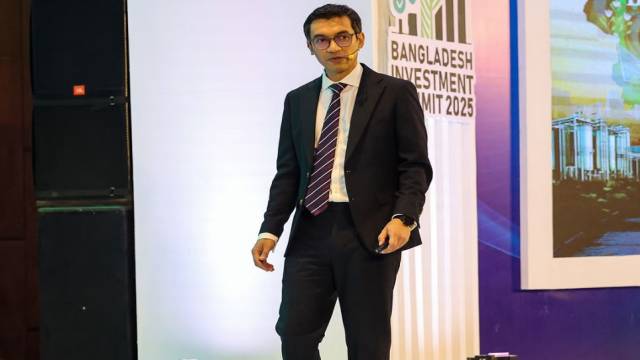 Daily Star Banner
Daily Star Banner

The Bangladesh Investment Development Authority (BIDA) recently organised an international investment conference, which more than 400 investors attended. The BIDA chair, Chowdhury Ashik Mahmud Bin Harun (more popularly known as Ashik Chowdhury), in his eloquent presentation, claimed that Bangladesh would turn into a regional manufacturing hub and thus become a country like Singapore or Thailand by 2035. His English language proficiency and oratory skills eventually became the talk of the town. All the government advisers who attended the BIDA chair's address seemed to be mesmerised, deeply gratified, and immensely proud as they enjoyed the 12-minute presentation. The media kept pouring praise on the interim government, which has done an exemplary job by picking a brilliant non-resident Bangladeshi to lead BIDA.
The Sheikh Hasina regime often picked retired bureaucrats to head most financial institutions so they could guarantee unconditional obedience and little merit. We are proud, too, of the new BIDA chair's performance, because no BIDA chief could speak so eloquently about attracting investments in the past. But marketing excellence is not enough to pull in foreign investors, who mainly judge the ground reality of the country—something not always palatable given the recent rise in mob violence, vandalism, and animosity towards foreign companies. The New York Times added salt to the wound by painting Bangladesh as a home of growing extremism. The law-and-order situation is also under question. Mr Chowdhury didn't do enough justice to economics in his stunning presentation, making the outcomes of the hugely publicised summit quite uncertain.
BIDA's claim that Bangladesh will become like Singapore or Thailand in a decade is reminiscent of Hasina's claim that Bangladesh will become a developed nation by 2041. We are not sure which quack economist gave this idea to the former prime minister. But the politicians in power echoed the tune without understanding its feasibility. It requires double-digit growth for 25 years in a row. Economists who raised this point were seen as "anti-development" agents. Mr Chowdhury's dream is even more euphoric at an uncomfortable time when the interim government is heading towards an election, and political stability, the precondition for FDI growth in a developing nation, is lacking.
When Mr Chowdhury mentioned two countries to model our targets on, it didn't make much sense either, because Singapore is far more advanced than Thailand. According to the World Bank (WB) data, Thailand's per capita income was $7,182 in 2023, while Singapore's was $84,734, almost 12 times higher. WB data also shows that in 2023, Bangladesh's growth was 5.8 percent, Thailand's 1.9 percent, and Singapore's 1.1 percent. Based on GDP and growth rates, the "catching-up calculations" show that it will take Bangladesh another 27 years to catch up with Thailand, while catching up with Singapore will take as long as 77 years.
What kind of background maths Mr Chowdhury did before manufacturing the dream of Bangladesh becoming a country like Singapore in just 10 years remains a big question. Given the dataset, Bangladesh requires at least a 13 percent growth rate for 10 years in a row to reach Thailand's per capita GDP. However, to reach the Singaporean level, Bangladesh must grow annually at 43.5 percent for 10 years in a row—which has never been seen in the history of mankind.
Imagination can supersede fantasy at times, but that is not how an economist should speak. Policymakers must speak more responsibly by engaging rigour and professionalism in forecasting. Of course, people have some appetite for dreams and fantasy. But whether a story of imagination teeming with fantasy will really bring investment to this land is an area for both doubt and research. Bangladesh earned FDI of $824 million in the first eight months of FY2025, marking a 20 percent drop in foreign investment compared to the previous period.
